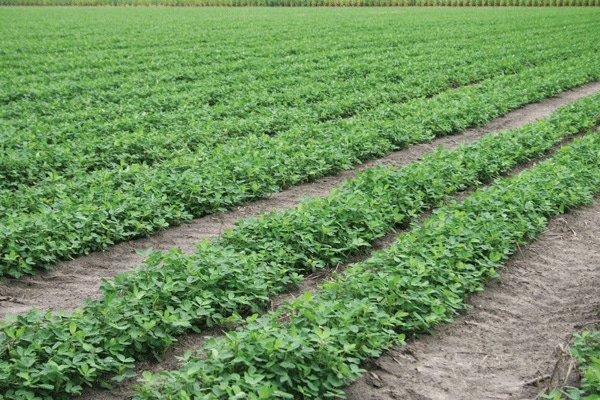March 9, 2011

Going into 2008, peanut contracts had hit $500, corn and soybeans were in a bull market, and cotton was having a difficult time getting into the game. But entering 2011, things have changed.
“Now, the roles of cotton and peanuts are reversed, and the big question is whether or not peanuts can hold onto the acres that were planted in 2010,” says Nathan Smith, University of Georgia economist. Smith gave an overview of the peanut markets during the recent Georgia Peanut Farm Show held in Albany, Ga.
This past year, U.S. peanut acreage was up 16 percent, he says. “Georgia’s increase wasn’t as high as the national average because we planted more cotton. At the end of the 2010 marketing year, we still had a large supply of peanuts, more than 900,000 tons,” says Smith.
U.S. yield for 2010 was pegged by USDA at 3,311 pounds per acre. Georgia’s yield was equal to the record in 2009 of 3,560 pounds per acre, despite extreme heat and drought late in the season.
“Domestic consumption continues to grow, driven mainly by peanut butter, and exports are projected to remain steady,” says Smith. “Crush will be increased this year with some of the quality issues we saw in peanuts from the 2010 crop.”
In Georgia, he says, cotton and peanut acreage both increased in 2010. “We had an impressive peanut yield considering the conditions. Varieties are certainly performing better than in the past. But what kind of yields do we need to use in projecting our acreage and production? We had good years in 2008 and 2009, and over the last five years we’ve averaged a little over 3,200 pounds per acre. If you use a trend yield in projections, I’d use about 3,300 pounds per acre,” he says.
Figures don't match up
The final tonnage figures don’t match up with the USDA projections because there is slippage going across states as peanuts are being graded, says Smith. “Georgia yields might be a little bit lower than USDA estimates. But added together, the yields are pretty close to what has been projected.”
If Seg. 2 and Seg. 3 peanuts in Alabama, Florida and Georgia are added together, it’s a total of about 65,000 tons, says Smith.
“That’s a lot, historically speaking. We usually have about .5 percent, and that’s more than 3 percent. If you total all Seg. 2’s and Seg. 3’s in the United States, that’s about 90,000 tons that may be cleaned up, but there can be a lot of losses in cleaning them up and they won’t be used in the edible market. So quality issues could make the stocks smaller than they actually are when you look at the carryover,” he says.
With the early $550-per-ton contract coming out, it sends a message that things are different this year, says Smith. Even with a crop of a little more than 2 tons, peanuts don’t want to lose too much ground to cotton.
As far as the market outlook for the coming year, the domestic consumption pattern will probably continue, he says. “We’ll see more peanuts go to crush than usual. Vegetable oil or soybean oil prices have been on the rise, so that should help peanut oil prices. Exports could face some competition, although for now they have us remaining steady or even increasing somewhat.”
Right now, says Smith, current cotton and corn prices are at a level that should pull away some peanut acres. “Especially considering $1 cotton, and, depending on where you are, possibly being able to get $6 or $7 corn, depending on the basis.”
Peanut contracts of $550 to $575 per ton were being offered going into this past November, according to Smith. “It sent an early message from shellers that they don’t want to give up very many peanut acres, because we’ll need about the same amount of acres this year as in 2010 to keep things level or to meet total consumption. If I use that 3,300-pound average yield for 2011, then it’ll take about 1.3 million acres.”
With cotton at 95 cents — at least — and corn at $6, what price will be needed for peanuts?
“Looking at the budgets for this coming year, we saw costs come down last year, but more recently, fertilizer and diesel prices have gone up. That’s in our budgets and projections for 2011, and eventually I would expect chemical costs to also go up, following up the higher prices.
“According to the National Center for Peanut Competitiveness, at 90 cents for cotton, $550 or $556 per ton is the break-even point for peanuts. For $1 cotton, we’re looking at needing $610 for peanuts. So if cotton prices stay where they are, we’ll probably need a higher peanut price to keep acres where they are.”
About the Author(s)
You May Also Like




